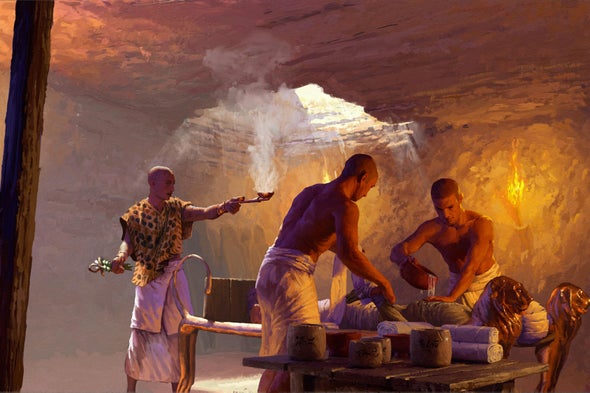Resins used by ancient Egyptians to prepare bodies for the afterlife are found in vessels in a 2,500-year-old workshop

But the researchers also identified two surprising ingredients: one resin called elemi, which comes from Canarium trees that grow in rainforests in Asia and Africa; and another called dammar that comes from Shorea trees found in tropical forests in southern India, Sri Lanka and southeast Asia.
“Egypt was resource poor in terms of many resinous substances, so many were procured or traded from distant lands,” says Carl Heron, an archaeological scientist at the British Museum in London who was not involved in the research.
Imported ingredients
Ancient trade networks connected India and southeast Asia with the Mediterranean region. But it’s not clear whether Egyptian embalmers sought out these specific ingredients or came across them through trial and error, says Ikram. “Absolutely amazing”, she says. “Who would have thought that they were getting stuff that might be coming from India?”
Ancient Egyptian embalmers had a sophisticated understanding of the raw materials’ properties, the authors say. Pots contained complex mixtures of ingredients that, in some cases, had been carefully heated or distilled. Many of the resins had antimicrobial properties — one bowl containing elemi and animal fat was inscribed “to make his odour pleasant” — or characteristics that promoted preservation.
“Their knowledge of these substances was incredible,” says study co-author Maxime Rageot, a biomolecular archaeologist at the University of Tübingen in Germany.
Chemical studies of mummies suggest that embalming recipes became more complex over time, notes Rageot. But one open question is how ancient Egyptians developed specific embalming procedures and recipes — and why they selected certain ingredients over others, said study co-author Mahmoud Bahgat, a biochemist at Egypt’s National Research Centre in Cairo, at a press briefing. “We need to be as clever as them to discover the intentions.”
This article is reproduced with permission and was first published on February 1 2023.
ABOUT THE AUTHOR(S)
Ewen Callaway is a senior reporter at Nature.


